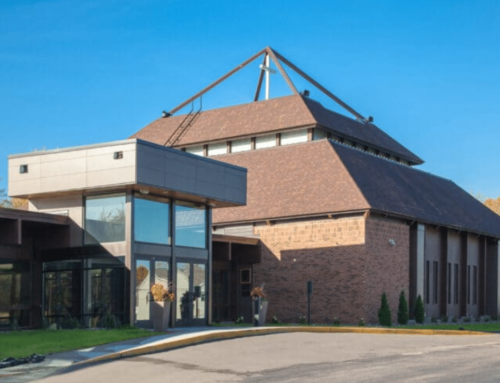The decision to relocate your church is never easy. You have built your community at this location. Your congregation is comfortable here and it has been a major part of their lives. But sooner or later, whether your current church is running out of room or is getting too old, church relocation becomes the only solution.
Instead of stressing about how your move will be perceived by the congregation, take it as an opportunity. This is a chance for your church’s community to rally together and create excitement about a new adventure to ultimately help grow their faith.
After meticulously going over the final blueprint for your new building, it’s time to implement a church transition plan for your congregation and rally support for the big move. Here are seven strategies you should implement to smoothly move your congregation.
1. Communicate Early
For many members of your church, the location of your sermons was why they came in the first place. It’s important you inform these members as soon as possible, so they feel valued and appreciated. This means reaching them over the phone or in person, and giving them information about the new location, including driving directions and a map of the new location.
As a general rule of thumb when moving a church to a new location, you should inform everyone in the congregation as soon as plans are set in stone. Setting up a table with packets of information or laying out the blueprint for the congregation to see is a great way to rally support and stir excitement. This can also be done on your website by sharing as much information as possible about the new location.
2. Be Transparent Throughout
Your communication about the project shouldn’t end after you announce relocation. It’s vital to continue communication throughout the building process and be as transparent as possible about how construction is coming along.
Weekly or monthly emails and mentions of the project during services will keep your congregation informed. Updates will make it seem like this is a team effort to get the move completed, even if the update is about a delay or issue at the site. You have instilled trust with your congregation, don’t lose it.
3. Connect Congregation to the Process
Another way you can receive buy-in from your congregation is to plan trips to the construction site. Make sure you run this by the construction site manager first, to ensure safety for your congregation and there will be enough fluorescent vests and hard hats to go around
Let’s say there’s a big steel frame that was added for the entrance. Get your congregation together and visit the site. Give them sharpies and ask them to write a special message so they know their words will live forever in the church.
4. Ask For Volunteers

It’s important for your congregation to feel a sense of ownership about the new church because it will be their place of worship and where they will ultimately grow their relationship with God.
Create a team of volunteers who will act as the liaison between the congregation and church leadership. This team will spearhead the moving campaign and help with the staging of the new church once it’s complete. Try giving them a name like “Forward,” “Unite,” or something that can stick with the other members of the church so they know who to go to if they have questions, concerns or donations.
These campaign members will be instrumental in drumming up support and confidence in the move with the congregation. Don’t forget to show your gratitude toward them after the move is complete.
5. Embed Yourself in the New Community
The campaign team can help with getting your new church integrated into the community you’re moving to. Ask them to begin outreach missions while wearing specially-designed shirts announcing the arrival of your church to the community. Spread the word while volunteering in your church’s new community.
6. Add Additional Services Before Leaving
Ensure every member of your congregation gets one last visit to the old place of worship by adding additional services before the move is made. A lot of memories have been made in that building — so give people the opportunity to relive those memories one last time before it’s gone.
Having more services will also give you the chance to thank the campaign team and have them recognized by their peers. If there is still a need for volunteers, this is a great time to spread the word about what they are doing so other members can get involved, too.
7. Express Gratitude Toward the Area You Are Leaving
You know in your heart of hearts that your church doesn’t mean to flee a location and leave a mission behind. Your church was brought to that community with the same mission it’s leaving with.
Sometimes your congregation may feel different — even betrayed by the relocation.
It’s your time to express gratitude for the incredible years spent at the old location. Reach out to the community you are leaving and thank them through service missions.
Making the decision to relocate your church is a significant move. These strategies will help you throughout the process and retain the same level of enthusiasm your congregation has shown for years.
Thinking about relocation? Consider partnering with Vanman Architects and Builders. While you coordinate communication strategies for your congregation, we can help you design and build your church’s new home. Contact our team and get the transition started today.






